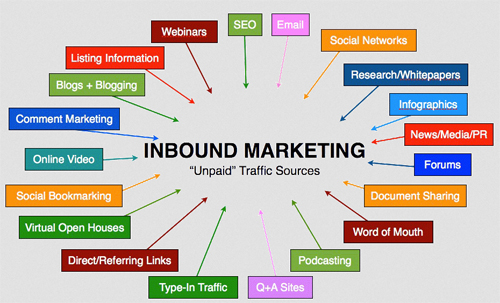Register now or log in to join your professional community.

Option-1 is the best choice for the following reason
Since it is a startup, you need to reach as many people as possible (mass messaging through newspaper advertisement and social media) and hopefully, a lot of people from the crowd may be interested in your product or services as per their choice and would visit your startup

i chose option 1 as answer

I don't prefer any of those three options for the following reasons:
1 = Spamming
2 = Time consuming
3 = Cold calling (not welcomed by many and time consuming)
I prefer social media groups & pages / online ads / public events

Agree with all expert answers above

Agree with experts answer <<<<<<<<<<<<<<<<<<<<<<<

In my opinion, everyone is required because each category and size of the Instant role in the process of project success

Three of your mentioned above could be keys of success if you combined wisely.
I give you some tips
Choose your targeted audience. Don’t try to please everyone as this is the road leading nowhere. Let us quote Sally Hogshead’s book “Fascinate”: “If you’re not generating a negative reaction from someone, you’re not fascinating anyone.” Icebergs don’t freeze overnight and you don’t have to be for everyone immediately. Start with something smaller, focus, and then broaden later. By the way, Facebook once was for students at specific universities, and look what is happening now. We, our teen kids, moms, dads and even grandparents have their Facebook accounts. This is a bright example of the right focus.
For ideas on niches you could target, view the The Niche Notebook.

Direct interaction with your current and potential customers via social media is one of the most valuable techniques for initiating a movement over your product or business. This method is cheap, if not free, yet rather efficient. Creating your brand through one-to-one interaction is a good practice that will pay off in the long run without fail.

Interesting, helpful content is the foundation for SEO and social media. Be sincere with yourself when generating it. Answer yourself a question: “Is my content really share-worthy?” Give users the reason to visit your website; quality content is a good one.
By this point we mean: try everything. Cover off SEO, e-mail and social marketing. Involve paid advertising (Display/PPC/etc.) when you need a reliable lever for driving revenue/conversions quickly.

Expert marketers assert that it’s impossible to build a solid product/service offer and marketing strategy without a strong brand identity. Building it should precede SEO, social media sense, quality content, and so on. A startup should first of all figure out who and what they are before writing any content for a website because namely your brand impacts your design, your language, your approach, etc. People relate to brands the same way as they relate to people. If someone’s not sure of who they are, it’s noticeable, and you’ll hardly pal up with the person. Just the same thing happens to the inconsistent brand.
Let’s enumerate the internal branding drivers: company product, mission, vision, goals, targeted audiences, and employee perceptions; and the external ones: all outreaches to the audience, as well as how the public perceives what you do.
Of course, you can pay for branding, but if you are strapped for cash, simply decide for yourself what kinds of questions do you want to answer, and use a simple survey tool to get them answered. Ask yourself and your crew questions like: “Why are you in business? What does your business do? Who are your customers? Who are you biggest competitors? What is your product? What is the biggest problem your product is solving? Where do you see the company in 5 years? How would you describe your company culture?” If you have no customers yet, start with these types of internal drivers so that everyone in your team was, at least, on the same wave.

Once this research is complete, you can look at how you want to present yourself to the public. You should also be able to glean your market segments from this exercise and create some customer profiles, which will help you target and message to each segment appropriately.
With those building blocks in place, you can develop appropriate marketing materials. At the bare minimum, these may include (depending on your product):
These 4 simple things will make you look professional, have a sales pitch, and show value.

Next, think about an integrated 6-month marketing plan based on your budget. Marketing outreaches include:
Mix paid and unpaid outreaches. Regardless of what you can or can’t afford, just make sure your marketing is integrated: it takes up to 7 touches for something to sink in for your audience, so if you run a campaign, make sure your outreaches are consistent with content and graphics, and spread across several mediums. Whatever you do, find a way to capture an email.
Include a CRM technology system to support your efforts. InfusionSoft is recommended for small businesses, but there are many others you can choose from. As you begin to build a client database and track who opens your emails, you can create a sales funnel that will narrow to actual sales. Don’t expect one email to result in a sale; instead, keep narrowing the field through multiple touches until you can pick up the phone and call someone directly – or better yet, they call you.
After a sale, make sure you have a good customer retention plan, with ongoing customer communications and training. Keep those clients happy and continue to document the value they find in your product. Bring them together to share best practices, and move your way forward to the leader in whatever industry you’ve entered.

When you just trying to launch your business shuttle, we advise you not to chase big ideas. Start with your unique selling points. Focus on your unique product’s characteristics in comparison with your competitors. Based on the above info, identify your targeted customers. At the very beginning, it’s highly recommended to focus on small specific groups, the tastes, preferences and demands of which you are sure about. Watch them; study their behavior, their interests, their desires… Then it won’t be too complicated to find out the channel of approach your targeted customers. Make everything as simple as possible. You can’t afford to make short & mid term effort and money investments.

This step seems so obvious and simple that many novices forget about it. Please, remember: your cash will run out even before you realize that fact in case you don’t keep track of your spending. It doesn’t matter how you are going to approach your customers; try to strictly work out the cost. Never estimate anything. If you have suppliers – contact them for actual quotation. You may use MS Excel to record your cash flow data, but don’t forget to edit it regularly. This way you’ll see your potential budget deviations and threats in time.
It’s great to design a simple chart (e.g, gantt chart) to have an overview of your marketing plan progress and try to keep balance with the amount that runs away from you bank account. Improve your marketing plan as soon as you see that something is going wrong. We also advise you to have a back-up amount to cover “must spend” marketing expenses in case of necessity.

This strategy is applied to achieve low-cost organic leads. It’s not a quick solution, this method takes time to mature and grow. However, it’ll yield high quality leads. Want to know how to start? Present yourself as a thought leader by writing about your industry in your blog. You can also use guest blogging in established publications as well as infographics, white papers, case studies, and the like. All these efforts will keep you in the loop of your industry.


It makes no sense to ask customers what they want because by the time you get it built, they’ll want something new. (Here we paraphrased Steve Jobs’ quote a little bit). So, what is the right thing to do? Bring to light why your customers want this or that thing. This way you will address the reasons why people want what they want and be truly unique, creative and disruptive.

Your goal is to outsmart and not outspend your mature competitors. For instance, you can create a compelling story around your product or marketing campaign. Plus, your product should be really great as no amount of marketing is going to make up for a poorly made product.

By this point we mean that you should analyze and clearly understand your customer’s lifetime value. This will inform your allowable customer acquisition cost which then will show the marketing channels, strategies and tactics you could afford to employ. If this monitoring prompts that you need to generate traffic extremely cheap, you may use tactics like SEO, PR, social and viral marketing. Maybe it will be better for you to spring into action a totally different strategy of renting e-mail lists, sending direct marketing mailers out to potential customers, employing a telesales staff and buying media at scale across the web. As you see, everything depends on the economic drivers of your business.

Start-ups with no reputation have to establish relationships that build trust, so be genuine when networking. Not speaking to potential customers is a suicide for any start-up because you mean nothing to anybody. Understand your value offering and be ready to explain it briefly. Know what do people love/hate/cry about there and pull these emotional strings. This is how you develop a following with loyalty. You won’t develop a community around a better app, but you will develop it around a belief/stance that the app fulfills. The above actions will become your platform for marketing tactics. They are rather difficult to implement, but very essential. Then you will be able to start the actual tactics of SEO, online PR, social marketing, etc., which are important, yet secondary and easier to learn.

A focus on only making a great product (or service) doesn’t work in real life, that is, nobody will start buying it immediately for that reason. You need segmentation to understand the potential sources of growth. Group customers according to the choices they make.
After you’ve understood the various groups which can be your potential sources of growth, you need to choose the ones against which you’ll direct your marketing resources. Here you’ll have to fight the temptation of going blindly after the biggest segment (in volume or value). While it can be the segment with the biggest potential in itself, but the timely question to ask oneself is that can you even begin to serve the specific needs of that segment, and are you, given your present available strengths, well placed to succeed in that segment, which will be targeted by multiple other competitors for obvious reasons. You must match your target segment’s needs with your own strengths (if you want to win, of course) by making informed choices about your target audience, and ignore the others.
Positioning is something which isn’t done to your product, but actually in the mind of your prospect (as most people use their minds, rather than their brains, to make a lot of choices). And thus, for conceptualizing and executing a successful positioning strategy you need to decide on a positioning that’s unique, differentiated, ownable and sustainable over the long-term, while keeping in mind your target audience’s profile, the competitive frame in which you operate, and your key point of differentiation.

To succeed in your start-up adopt the simplest and most cost effective medium to communicate and deliver your product/service in-time as nothing can be more distressing than a belated delivery. Think over on creating a system to remain in touch with your satisfied customers. Don’t give up on the unsatisfied customers either, identify and respectfully deal with them to convert the abused clients into happy ones by means of your behavior as well as by your product/service. Encourage your satisfied customers become the volunteered salespersons.

From the above info we understood that content is very important, especially when it comes to SEO and gaining good ranking on search engines. However, you can provide content in other ways once you’ve gained a following such as in a Twitter feed, Facebook posts or one of the most effective: an Email list. Enter AWeber email marketing. Open up an account with AWeber and you’ll have the ability to automate your content sharing by programming a series of emails to be sent to your subscribers in a predetermined schedule. This is the type of leverage and freedom which many successful online businesses are built upon.

A/B test everything. Your product and potential users are unique and unfortunately there are very few black & white answers in marketing. The key to your answer can be found in the question. Start with a proper strategy before you start to think about execution, if the strategy is set the execution should be easy to figure out.

Attempt to reach the crucial stats, such as conversion rate, as quickly as possible. This allows you to calculate how much proverbial runway you have, and approximately, what your CPA is, and see further down the tunnel.
Once you have this established with delta change under 12% or so, you can then start throwing traffic at your sales funnel.
If you start with adcenter for example, and are seeing ROI, do remember you can always port a campaign over to other similar channels, in this case – Google Adwords, with relatively the same conversion rate. Your costs will be higher, but this also gives you a fall back.
At this point many changes can simultaneously be made to product, always attempting to make conversion rate higher. Worst case scenario is you still have version A to fall back on.
Other crucial KPI’s such as CLTV will come later, but you need to establish important metrics lower down the funnel first.
This is known as a bottom-up approach. It works great in finding product/market fit before investing much more resources.

* * *
We sincerely hope that our list of start-up marketing strategy tips from industry experts will help you raise your business quickly and frugally. Summing up everything said above, we would like to highlight the most important moments once again.
Of course, much depends on what you are selling, but some of the best marketing strategies for a start-up could be:
And the last option, which we hope you won’t use – if all attempts fail, hire a marketing agency.

In the initial stage, MASS Messaging will be prove more effective in inviting the people to your startup Venture.
After some time, you can offer unique customized products to the specified target market by private messaging.

Normal method is advertising with modern medias ( Newspaper, Social media networks).
I leave the answer to the experts, specialists in this field .

From the given options. i would prefer the option 1, mass messaging for one simple reason, since it is start up.



